Spiritual warfare Trail of the Jesuits in Syria. Part of 1
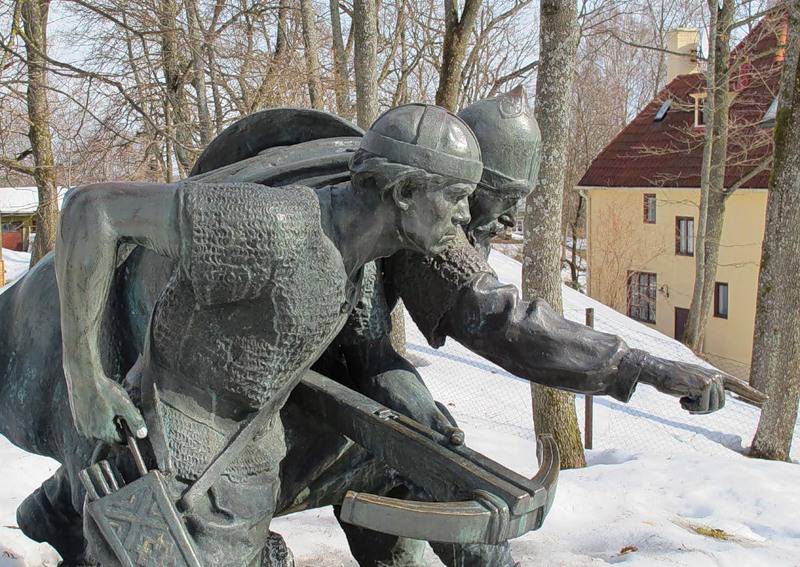
Who would have thought that in Ukraine, women and children would throw up their hands in a Nazi salute and gain a new faith. Jesuit faith. And in Latvia they will forget that they have written since ancient times in Russian.
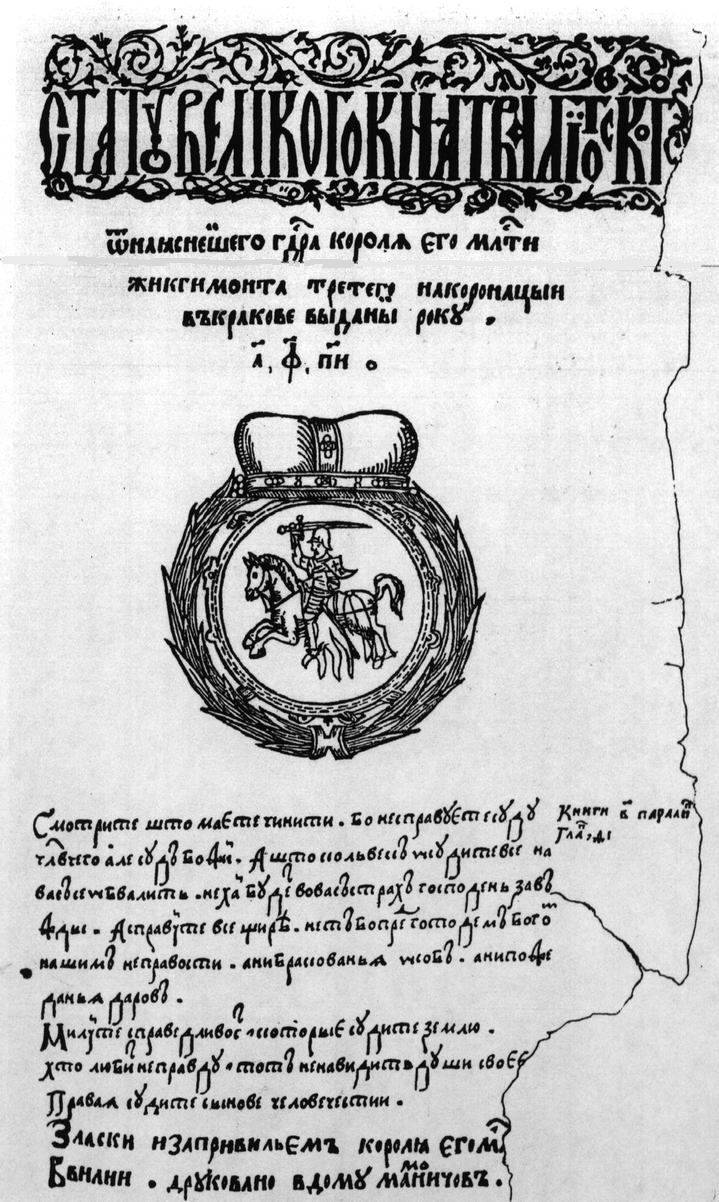
In pursuit of the number of Christians baptized, the Jesuits went on everything. They changed the Catholic ritual, so that the new believers saw in it as little as possible the differences from the rites of the local religions. Pretty often the baptized were still allowed to visit the "pagan" temples. The Jesuits themselves willingly dressed up in the costumes of the priests. The Catholic religious books, prayers, and hymns written specifically for these countries were modeled on the books and prayers of local cults that were familiar to the population. This adaptation was initiated by Francis Xavier, and his followers in some ways went much further. Already in 1570, they said that almost 200 000 of the Japanese “saved the souls” of the Japanese, not counting women and children.
Such feats were sometimes arranged with democratic formalities: for example, in 1688, the pope received from 200 thousands of Siamese people a petition about their adherence to the Catholic religion. Of course, this method was easier than the difficult and dangerous trips of Francis Xavier in the vast Asian territories.
The Catholic Church highly appreciated the merit of this king of missionaries, who for ten years traveled about 50 000 kilometers. He was declared a wonderworker. He officially received the right to be called the apostle of India and Japan. In 1622, he was proclaimed saint on the same day as Ignatius Loyola. In Goa, he erected a monument.
The size of the income of the Jesuit order from missionary work can be judged by the fact that the Jesuits, who settled in China in the XVI-XVII centuries, lent local merchants money for huge percentages - from 25 to 100 percent. We can also mention the report of the Canadian Governor Colbert, written in 1672: he wrote that Jesuit missionaries are more concerned about the extraction of beaver hides than about their preaching. A fifth of all slaves on Spanish plantations in Chile in the 18th century belonged to the Jesuits. In 1697, General Martin, who served in the French forces in India, wrote in the report as something that goes without saying: "It is known that the most extensive trade after the Dutch is the Jesuits." Complaining that Jesuit trade caused great damage to the French East India Company, he added: “In a large squadron, which arrived in 1690 from France to Asia, the 58 brought heavy bales, the smallest of which was larger than the largest companion. In such bales were expensive European goods that could be sold well in the East Indies. And in general, not a single ship comes here from Europe, on which there was no baggage for the Jesuits ”(quote from Theodore Griesinger’s book, Jesuits. Full story their obvious and secret deeds from the base of the order to the present. T.1, p. 330-332).
Griesinger also wrote: “Some of them are in India, embraced by genuine zeal for spreading the Gospel, but they are known to be very few, and they do not know the secrets of society. But there are still real Jesuits, although they cannot be noticed because they are disguised. These Jesuits intervene and know everything about those who have the best goods. They recognize each other by certain signs and they all act according to the same plan, so the saying “how many heads, so many minds” are not applicable to these priests, because the spirit of all Jesuits is always the same, and it does not change, especially in trade affairs ”.
Nowadays, directly earning income from missionary activity is no longer as important a task of the Jesuit order as in those distant times. Modern Jesuit missions are created as supporting bases of European and American spheres of influence. The number of Jesuit missionaries is growing every year.
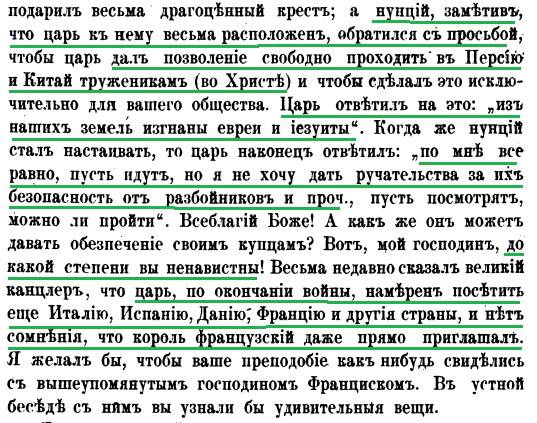
In addition to its many lower and secondary schools, the Jesuits founded even colonies in colonial and dependent countries. For example, in Syria before the Second World War, 433 French missionary schools had 46 500 students in 1875. In addition, hundreds of Catholic schools were founded there by American and other missions — organs of warring intelligence agencies from different countries. In Beirut, back in XNUMX, the Jesuits opened their “University of Saint Joseph”, which has medical, pharmaceutical and law faculties. At the university there were teachers' and engineering institutes, as well as a higher school of dentists.
Back in 1660, the Jesuit Jean Besson published in Paris an interesting book "Holy Syria", in which he gave a detailed overview of the entire eastern coast of the Mediterranean Sea on five hundred pages. Along with the mass of materials interesting to French merchants and diplomats, the book is full of all sorts of background information for missionaries, and Jesuits in this area, as can be seen from the title of the book, are depicted in the most laudatory tones.
Thus, under the guise of enlightenment, Jesuits have long established their agents for propaganda and espionage in the most diverse sections of the population of those countries where they manage to penetrate.
Interestingly, in the 40 of the 20th century, the Vatican, in order to retain its position in the colonial countries, actually canceled the decisions of the former Roman popes, who condemned the participation of Catholics in pagan rites allowed by the Jesuits. For example, in 1645, 1656, 1710 and 1930, the pope prohibited the Catholics of Asia from adhering to the customs of the Confucian religion (this was achieved by the monks of the orders competing with the Jesuits). However, in 1940, the Vatican "Congregation for the Propaganda of the Faith" announced that Chinese Catholics are allowed to attend religious ceremonies in honor of Confucius, have his portraits in Catholic schools and participate in Confucian funeral rites.
Earlier, the Catholics of Japan and Manchuria received such permission from the Pope.
All these measures were taken to make the Chinese and other peoples of Asia a transition to Catholicism easy and not embarrassing novelty rites. In 1810, there were 200 000 Catholics in China, in 1841, in 320 000, in 1928, in 2 439 000, in 1937, in 2 936 175, and in 1939, in 3 182 XNUM.
An extensive intelligence network was created. For example, in 1954, a certain Lacretel, a Frenchman, the head of the Jesuits who had been based in Shanghai, was expelled from the People's Republic of China: he was exposed to spying, to spread provocative rumors, and so on.
Island states were also not ignored. The Vatican unconditionally preferred the Jesuits. So, it was the Jesuits that Pope Benedict XV entrusted missionary activity on the islands in the South Pacific that belonged to Germany before the First World War in 1921. The Jesuits first appeared there as early as 1667. In the very first year, they dubbed 13 000 islanders. After five years, the number of converts reached 30 000. However, after the Jesuits were expelled from Spain and replaced in missions by Augustinians and Capuchins in 1767, the missions went sluggish. In 1910, there was only a Catholic 5 324. Over 10 years, this number increased to 7 388 people. The Jesuits, who were transferred there from Japan in 1921, in the very first three years far surpassed everything that their predecessors had done over the decades: in 1924-1928, the number of Catholics rose from 11 000 to 17 230, and by 1939, to 21 180. Thus, in less than twenty years, their number here has almost tripled.
These missions, located on the Karolinsky, Marshalsky and Mariana Islands, which were of great strategic importance during the Second World War, served the Japanese armed forces who were at that time in the Pacific.

During the entire war, the Japanese government paid these Jesuit missionaries for their political and intelligence services a lot of money - as if to build schools. But they failed to defeat the Soviet soldiers.
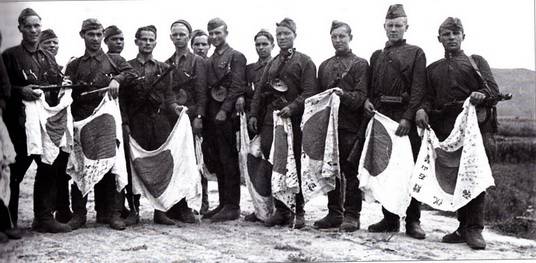
After the war, the situation has not changed. “The successes of the national liberation movement in the Far East and South-West Asia,” wrote the newspaper Krasnaya Zvezda 7 in January 1951 of the year, caused concern to the Vatican, which took a number of measures to strengthen its spy network in these countries. In October, a meeting of representatives of missions working in Korea, China, Indo-China, and Indonesia took place in Rome 1950.
The leaders of the Vatican intelligence decided to replenish their ranks by recruiting pilgrims arriving from all countries to Rome in connection with the celebration of the so-called "holy year." According to the French newspaper "Action", the general of the Jesuit Order Janssens is directly involved in recruiting for the information service of the Vatican, whose attention is mainly attracted by Catholics from Korea, Indo-China and Indnesia. According to the newspaper, pilgrims are abducted, taken to a special room, where they are trying by all means to obtain their consent to cooperate with their intelligence. ”
Similar implementation has been proceeding gradually in other countries.
Until about the middle of the 14th century, the Orthodox in Lithuania did not tolerate religious oppression. The Christian religion of the Russian population corresponded to the feudal relations that developed in Lithuania. Orthodoxy spread among Lithuanians both among the people and the ruling elite (until the end of the 14th century there were sixteen Orthodox princes in Lithuania). In these lands, Russian law and the Russian language were quickly inculcated; the most important state documents of Lithuania were written then in Russian (Boris Grekov, “Peasants in Russia”, book 1, second edition, M., 1952 year, p. 252-253).

Catholicism had no spread in Lithuania for a long time; moreover, Catholic monks, who had made their way there from the west, often became victims of cruel reprisals. This is understandable: after all, under the banner of Catholicism were the enemies of the Lithuanian and Russian peoples - “knightly dogs”. Under this banner was German aggression to the east. What kind of terror she carried with her, show the ancient chronicles, for example, "The Chronicle of Livonia" by Heinrich of Latvia.
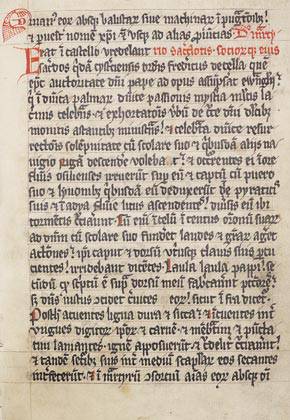
This was the case until the Lithuanian princes began to seek rapprochement with the Polish kings and thus opened the Jesuits a wide road to Lithuania. Immediately, attempts began to force the reunification of the Catholic and Orthodox churches under the Vatican leadership.
He was the first to undertake to help the Roman popes in these attempts the Lithuanian Grand Duke Jagiello (reigned from 1377 of the year), who was Orthodox at first, but then, in political terms, converted to Catholicism, signed an agreement with Poland and adopted the title of the Polish king. He established the first Catholic episcopacy in Vilna, provided the Lithuanian Catholics with legal advantages, began to build churches. In one of his letters, it was said: “We judged, resolved, promised, obliged and, upon accepting the saints, gave an oath to all the people of the Lithuanian people of both sexes, in whatever their rank, condition and rank, to bring the Roman Catholic faith and obedience to the Roman Church , attract and by all means join ”(M. Koyalovich,“ Lithuanian Church Union ”, t. 1386, M., 1 year, p. 1859).
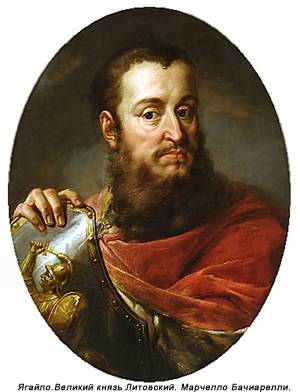
To all Russians who did not want to convert to Catholicism, Yagailo forbade marriage with Catholics and hold public office. The Catholic clergy got him a place in the senate.
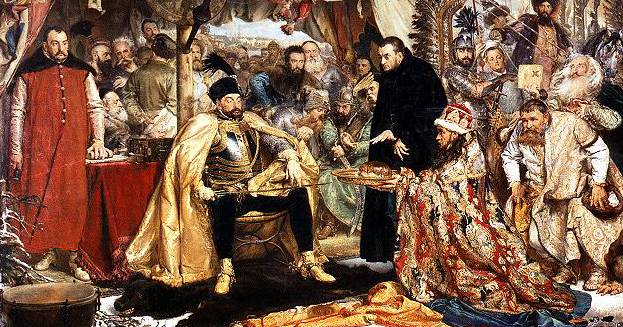
The positions of Catholicism were especially strengthened when Stefan Batory (who reigned from 1576 to 1586 years) became king of the Polish-Lithuanian state and, having converted to Catholicism like Yagailo, began to patronize the Society of Jesus in every possible way. He liked to repeat: “If I were not a king, I would be a Jesuit” (quoted from the book by Nikolai Lyubovich “To the history of Jesuits in the Lithuanian-Russian lands in the 16th century”, M., 1888 year, p. 28). He equated their Vilna collegium with his rights with the famous Krakow University and turned it into an academy. Taking Polotsk in 1579, he immediately founded a Jesuit college there, for which he received special thanks from the papal nuncio Caligari (from the book Monuments of Cultural and Diplomatic Relations of Russia and Italy, t. 1, issue 1, L., 1925 year, p. 71).
From 1587 to 1632 years reigned Sigismund III - a graduate of the Jesuit Skargi Varshevitsky, rector of the Vilna Jesuit Academy. Mentioned Skarga became the confessor of this king. No wonder Sigismund called himself "the Jesuit king." Under him, the oppression of the Ukrainian and Belarusian peoples unfolded to its fullest extent. It was under his rule that the Brest Church Union took place.
In Lithuania and Poland there was a so-called patronage: every feudal lord sovereignly disposed of the church institutions that were on his lands. The main feudal lords were kings. They gave away churches and monasteries. Having the right only to approve bishops, the kings directly appointed them: for example, it is known that, in his whim, Batory made bishops two laity, and once gave the Catholic the important Orthodox priesthood. The Polish king Sigismund-August in 1551, during the lifetime of Metropolitan Macarius of Kiev, issued a formal guarantee to his close Belkevich on receiving the dignity of Metropolitan as soon as Makariy died. Belkevich was a secular man. He accepted monasticism after he became a metropolitan under the name of Sylvester. In 1588, Sigismund III granted the Mstislavsky Onufriev Monastery in the possession of Prince Ozeretsky-Drutsky for life - a man who was also clearly secular, he was just about to go into the clergy, as the royal literacy said.
The peculiar organizations that did a lot of useful work in the struggle for liberation were the so-called fraternities. They have long emerged in cities as organizations for charity and joint meals, and in the 15th and 16th centuries they began to seriously influence the selection of clergy and its activities, and often entered into conflicts with them.
Brotherhoods were centers of cultural life of the Belarusian and Ukrainian peoples. When they were school and printing. In Vilna, Zabludov, Lviv and Ostrog, Russian pioneer printer Ivan Fedorov worked at the fraternal printing houses.
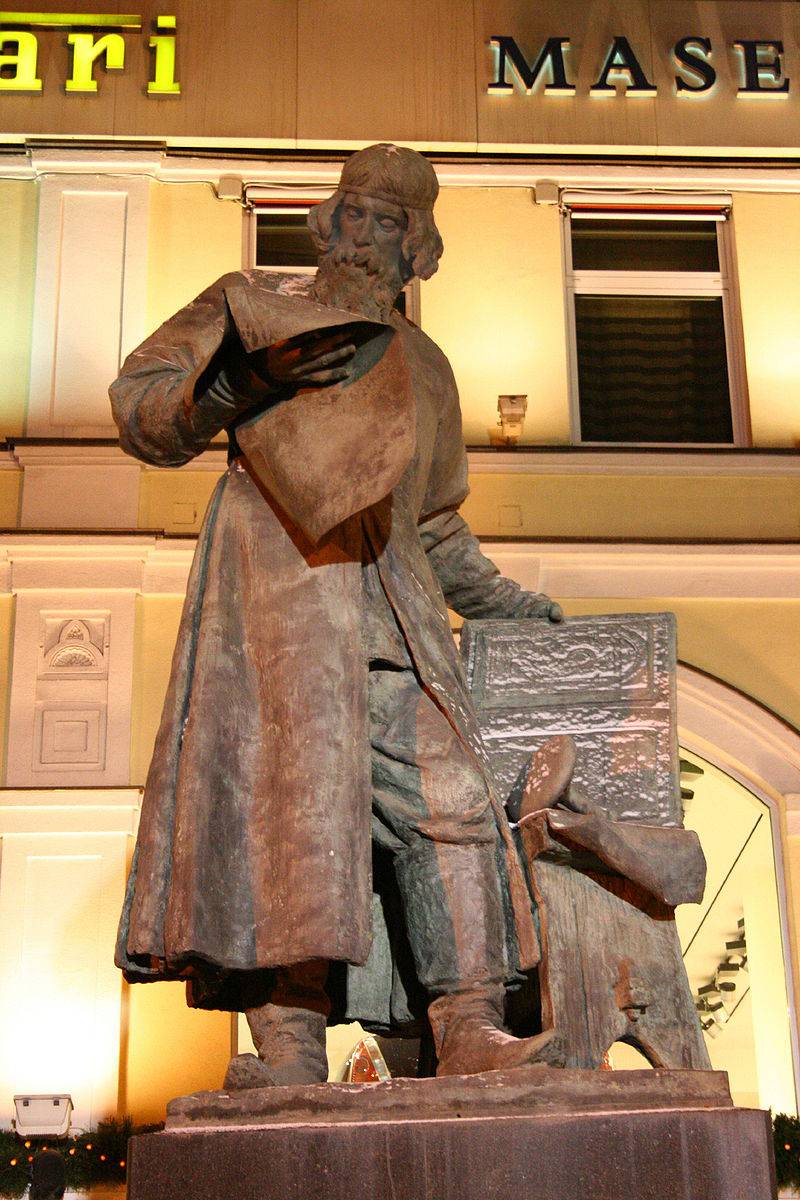
In 1586, in Lviv, one of the churches opened a school (later outstanding) of the Slavic and Greek languages, and with it the printing-house “Slovenian and Waltz letters”. It was shortly after the Lublin ounce and only ten years before Brest.
To be continued ...
Information